California’s EV charging network could use a jolt, a trip down I-5 shows
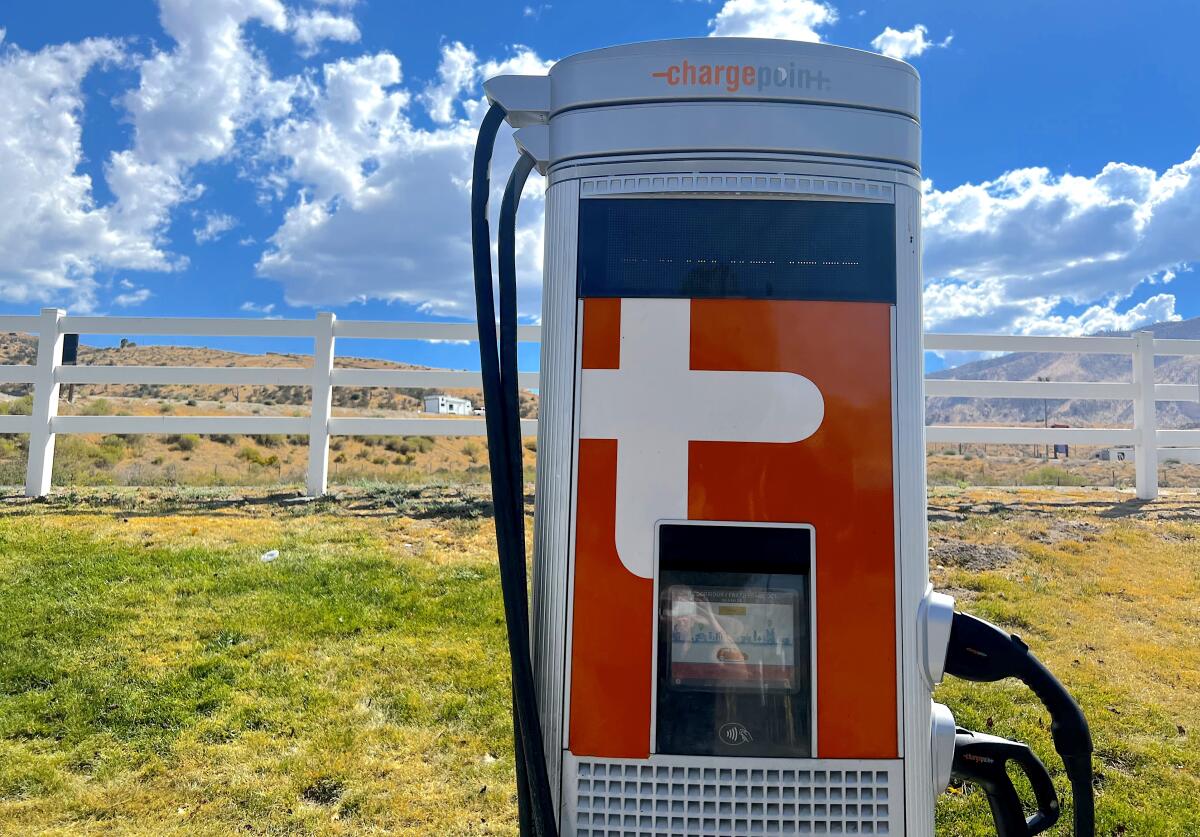
This is the Sept. 22, 2022, edition of Boiling Point, a weekly newsletter about climate change and the environment in California and the American West. Sign up here to get it in your inbox.
My name is Russ Mitchell. Sammy Roth is on vacation, and I’m attempting to fill his fine and well-crafted shoes. I cover automobiles at The Times. So I’m making electric cars and EV chargers the theme of this week’s Boiling Point.
I own an electric car. I test drive electric cars. I’m a big fan of electric cars.
But the public charging system for electric cars? Not a fan.
I recently piloted a Ford F150 Lightning EV from my Berkeley home down Interstate 5 to Long Beach, a 400-mile trip. The truck? Great. The charging experience? Miserable.
The misery was meted out in several ways. Charging stations were hard to find. Maps that locate stations were not reliable. Paying for a charge with a credit card often proved troublesome, sometimes impossible. Worst of all, way too many chargers were broken or otherwise out of order. (“Unavailable” is the preferred industry euphemism.)
Running low on juice at the foot of the Grapevine, for example, I found a ChargePoint station off Interstate 5 at Frazier Mountain Park Road. The station comprised two chargers on the far weedy fringes of a nearly empty Jack in the Box parking lot. Only one of the two was what’s called a DC fast charger.
The fast charger wasn’t working. Its digital readout read “unavailable.”
I called the toll-free customer service number. Yep, the charger was unavailable. Why? Not sure.
The other charger, unoccupied, was the more common slow charging variety. I plugged in, eschewed Jack in the Box in favor of a sandwich at Subway, waited an hour and 15 minutes. In that time, I’d added nine miles of range. Pathetic, yes, but nine was enough to make it down Interstate 5 to where I found a ChargePoint fast charger that worked.
A charger that is operating properly should not provoke so much joy.
Billions of dollars in state and federal subsidies will soon be pouring down on the EV charging industry. Over time, millions of public chargers are to be installed, more than a million in California alone. Great for EV owners. The more public chargers, the better.
But numbers won’t be enough. If the reliability of those chargers doesn’t improve — and dramatically — the state of California may well encounter a public backlash against the mandate that all new cars starting in 2035 must be electric.
My Interstate 5 experience was not a one-off run of bad luck. I’ve had similar problems with public chargers back home.
A study of San Francisco Bay Area charging reliability led by a researcher at UC Berkeley released earlier this year found that of 657 chargers, 23% were out of order and an additional 5% were fitted with a cable that couldn’t reach a car. Of the three biggest vendors, ChargePoint was the worst (36% not working), EVgo second worst (25% not working), followed by Electrify America (19% out of order).
The poor record is reflected in surveys. A Plug In America poll in 2021 found that 34% of EV owners surveyed reported problems with public chargers, with broken fast chargers the most common concern.
Another, published in August by market researcher J.D. Power, found that 20% of respondents showed up at a public station and did not charge up; of those, 72% said the station was out of service. Those poor numbers are worse this year than last, despite — or perhaps because of — the growth in new charging stations.
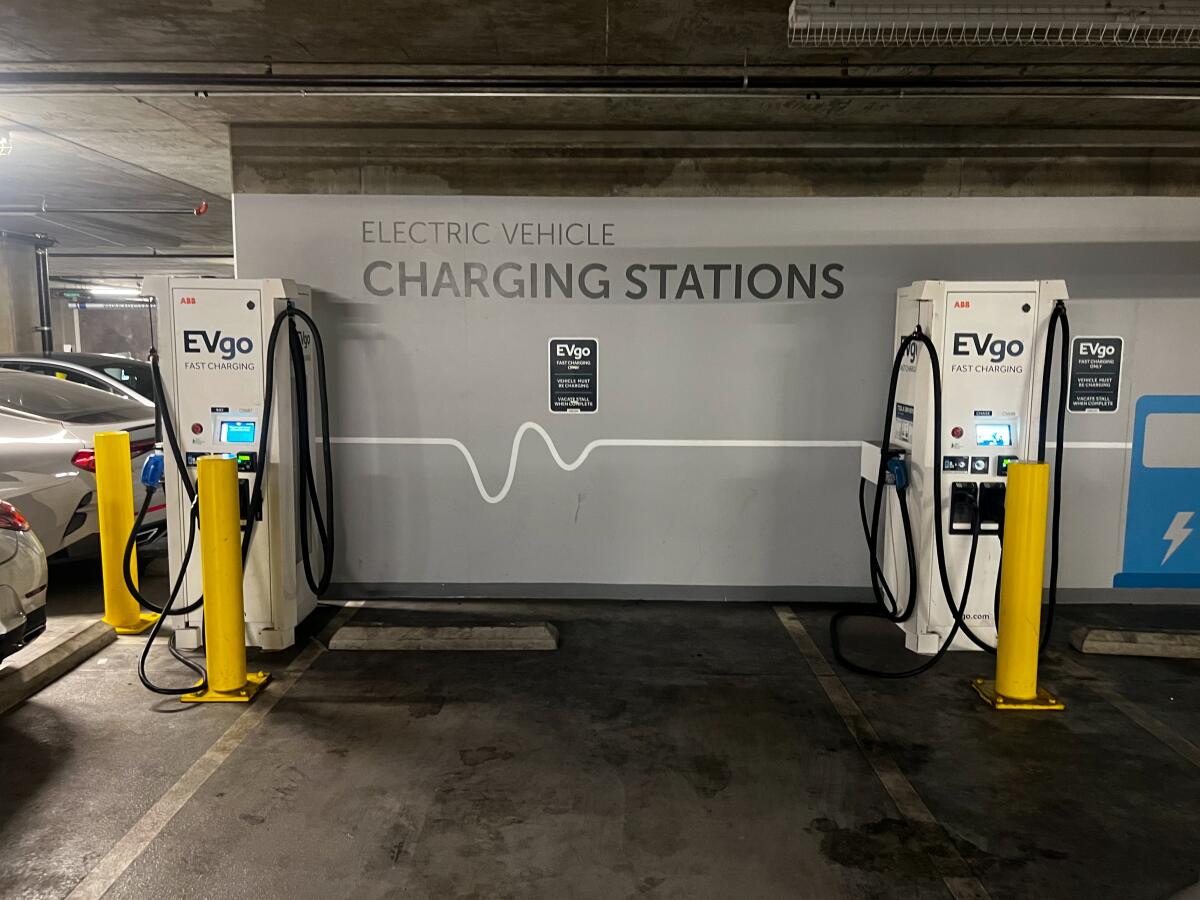
My experiences on the trip illustrate the frustration.
I found plexiglass screens placed over ChargePoint touch screens throughout Long Beach that rendered a credit card purchase impossible. I ran across a Rivian driver who spent 15 minutes on the phone with Electrify America to get his app to work with the charger.
I found supposedly public chargers in buildings with no public access, including one up the ramp of a Long Beach apartment building with the entrance marked “Residential Parking Only.” Neither of the two EVgo chargers were working. One was marked “unavailable.” The other wouldn’t charge after I plugged it into my vehicle. The person on the toll-free EVgo line didn’t know why and said she’d help find another location.
Why are public chargers so unreliable?
One reason: Responsibility for service and maintenance is diffuse. Installing and operating a charging station involves a mix of players. The marketer. The installer. The site owner, often retailers that include Whole Foods as well as individual mini-mart owners. The electric utility. The internet provider. The credit card company. The manufacturer of the charger itself.
The marketers — think EVgo, Electrify America, ChargePoint — might be responsible for service and maintenance, or might not. In ChargePoint’s business model, machines are sold to site owners, who assume the responsibility to keep them in working order.
Here, I must note that Tesla has built a vast network of fast and reliable chargers.
It cost Tesla a lot of money to do this, cash that Tesla Chief Executive Elon Musk raised through means sketchy or not: selling huge numbers of cars, boosting Tesla’s stock price with false promises about future products, selling features like “Full Self Driving” for $15,000 that aren’t full self-driving. The result is a unified system in which the ultimate responsibility for charger reliability sits with Tesla.
Drive into Harris Ranch Inn & Restaurant near Coalinga on Interstate 5 and the Tesla difference becomes clear. There are 80 newly installed chargers soon to go into operation. There are clearly visible road signs that use arrows to easily direct drivers to the 18 chargers, located in another area, that are open and available.
For those with electric cars not named Tesla, you can search for six Electrify America public chargers in two different spots in the hotel-restaurant’s parking lot. The day I was there, one charger was unavailable.
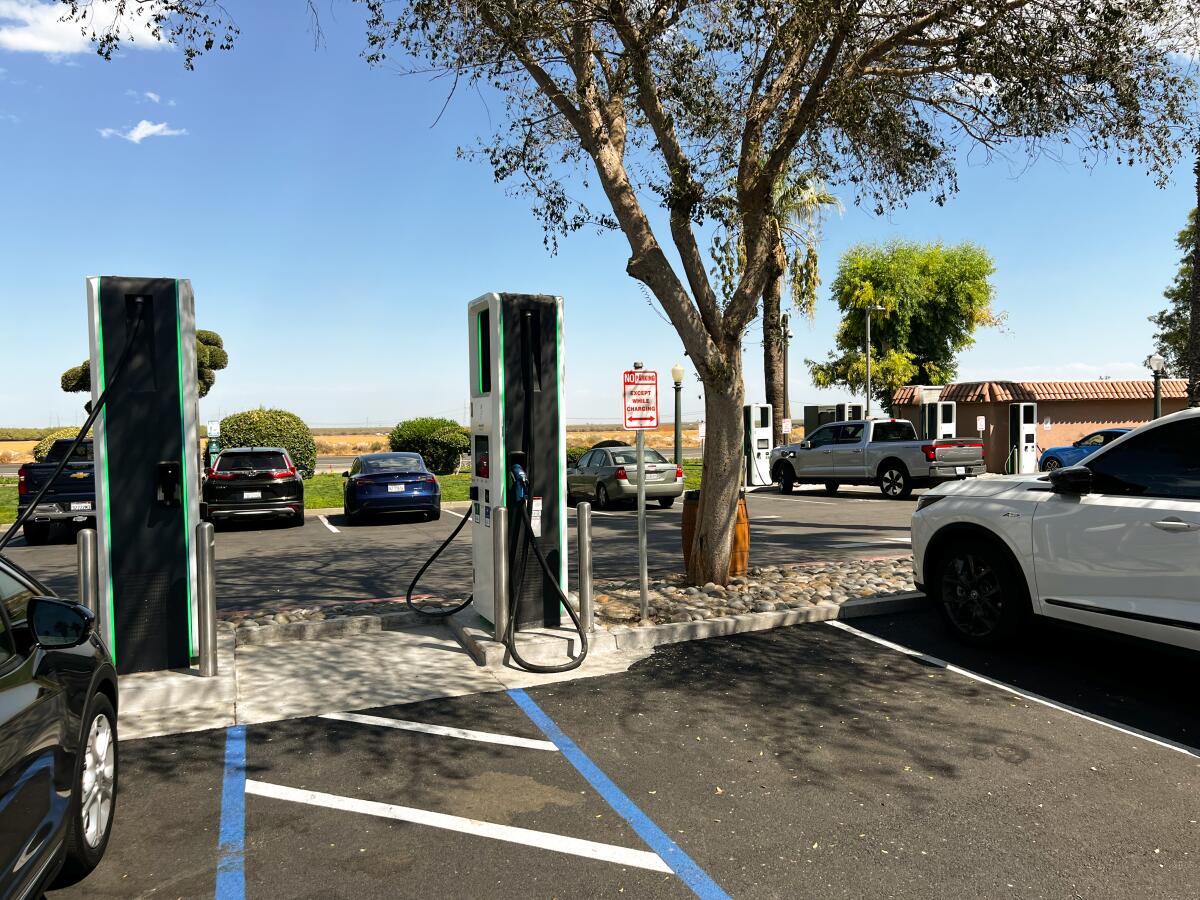
Electrify America has more true fast chargers than the competition. The network gets some of its funding — hundreds of millions of dollars — from Volkswagen, part of its penalty after its cheating ways on diesel emissions were revealed in 2015.
Other charger companies are funded by venture capital, or have gone public through special purpose acquisition companies. One of them, Greenlots, was recently bought by Shell. All are under pressure to show profits in a business in which it’s unclear where charging profits will come from sans subsidies.
Both the federal government and California will require the recipients of billions of dollars in grants and other subsidies to maintain stations with 97% reliability. But it’s unclear thus far how company performance will be determined.
Gov. Gavin Newsom recently signed a bill to require information collection, and the state says it’s studying the issue. There’s been little to no discussion about how that 97% figure will be enforced. The Bay Area study noted that although it found only 75% of public chargers were operable, the companies were reporting 95% to 98% uptime to the California Air Resources Board. The study’s methodology could account for the difference, but 20 percentage points is quite wide.
I called the three big EV charger companies to ask about the reliability problems and what they’re doing to solve them.
Anne Smart, head of global policy at ChargePoint, said reliability was improving. The company looks at comment sections online and “we see quite a trend in statements that when drivers go to these stations, they are up, they are usable.”
She noted that the $5 billion over five years to be handed out across the U.S. in federal subsidies will require 97% uptime. (California gets $384 million of that, on top of state funding.)
Asked what ChargePoint was doing to reach such high levels of reliability, she said that the majority of its public chargers were independently owned and operated.
“The site hosts are critical, she said, adding that “we provide maintenance services to help the owners keep the equipment running. … We provide a free app to locate the stations and we can receive communications from the driver when a station is not working.”
She advised ChargePoint customers to use the company’s app for payments, or use the contactless chip reader on many of the company’s chargers. Sometimes the credit card readers don’t work because they’ve been exposed to “dust or wildfire particulates,” she said.
Electrify America acknowledged that reliability was a serious issue and detailed the ways the company was addressing it.
“There are problem spots, and we recognize it,” said Rob Barrosa, head of business development. “It’s all about what you are going to do as a company to stand behind your performance.”
Five years ago, the company built what it calls a Center of Excellence where “we test every electric vehicle you can imagine” to identify potential problems from the start.
The company also maintains a network operations center. In addition to trying to keep things running, it collects and analyzes data on charger performance. “We’re looking at hundreds of thousands of charging sessions for patterns, where anomalies or errors are occurring.”
Electrify America puts at least three chargers at each station. The average, it says, is five, and in some places as many as 20.
“Redundancy is important,” Barrosa said. “If you put a single charger somewhere” and it doesn’t work, “that doesn’t instill a lot of confidence.”
The company is pressing its charger manufacturers to improve quality as well, he said. “We’ve actually tried to take ownership of the technology” and dump suppliers who can’t keep up.
And, the company has a roaming fleet of “secret shoppers” who drive around in different EVs to test the company’s equipment.
“We are doing everything we can to stay ahead,” he said. “You have to keep upping the bar over and over again.”
EVgo likewise copped to the problem, although Chief Commercial Officer Jonathan Levy felt obliged to say, “I tell people the state of charging is better than people think.” But, he added, “we have a lot of work to do to go from bleeding and leading edge” to mainstream experience.
The company has opened its own “innovation lab” in El Segundo to test cars from all the manufacturers to make sure the public charger and electric vehicle play nice together.
EVgo, founded in 2010, was an early player, and “some of those early chargers are out there and aging,” he said. The company has started replacing those.
As with Electrify America, it’s building stations with more charging points so a broken charger won’t necessarily spoil a car trip.
“We make money when chargers work,” he said. “When we don’t, we lose money, so we’re motivated to make the chargers work.”
If I were grading the public charger industry, right now I’d issue a harsh D+. At the parent-teacher conference, I’d say that Johnny is not living up to his potential. Let’s hope he applies himself.
And now, here’s what else is happening:
POINTS OF VIEW
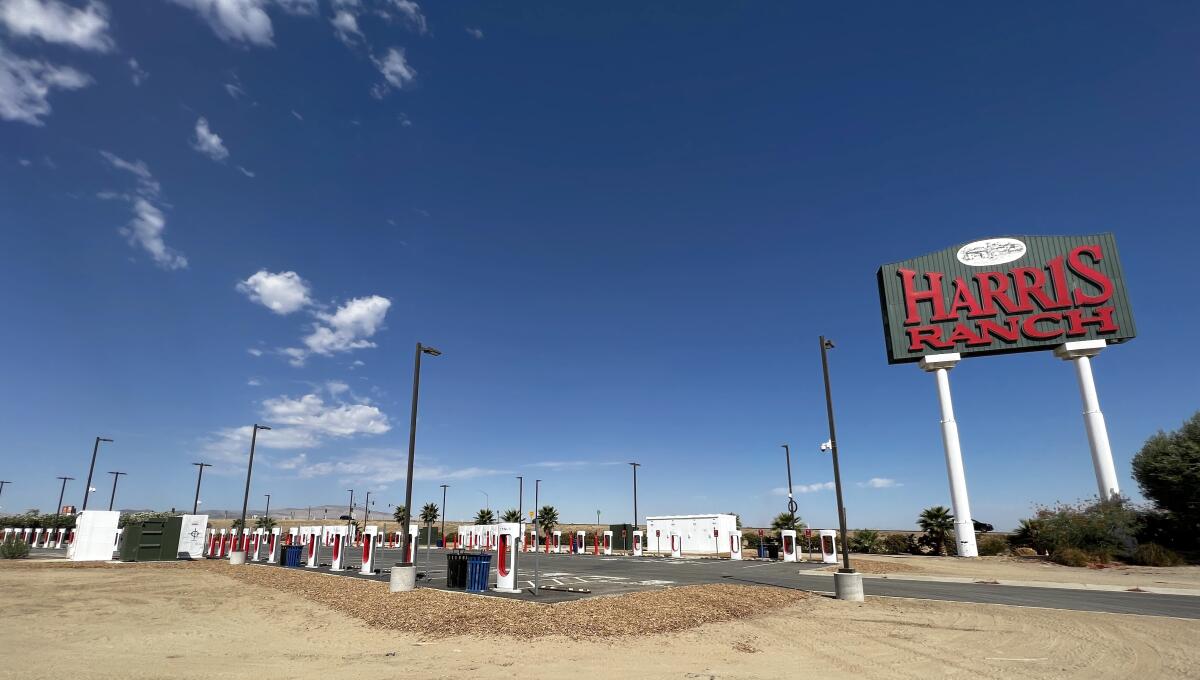
The Times editorial board may have surprised many people with its vote-no position on Proposition 30. That’s the tax-the-rich plan to pump $80 billion more into subsidies for electric vehicles and charging stations. (On top of the billions in subsidies already being provided by state and federal taxpayers.) A small portion of the money would go to wildfire response and prevention.
The editorial board is deep-set on pushing aggressive public policies to address climate change. In this case, though, the editorial says, “While it may be tempting to put the burden on the rich — again — for one of California’s top priorities, voters should say no. Proposition 30 has too many flaws. It’s bankrolled by one special interest and it doubles down on an unsustainable funding model.”
Personal incomes of more than $2 million a year would be taxed an additional 1.7%, for a total marginal rate of 15.05%, the highest in the country. California’s budget is disproportionately dependent on wealthy people and the income that comes from their investments. As stocks go up and down, so does the state’s revenue. And the more wealthy people are chased out of the state by high rates, the less revenue is available for state programs.
The special interest in question is Lyft. The state now requires that 90% of the miles traveled by ride-hailing companies such as Lyft and Uber be covered by electric cars. So Lyft has its own special interest. Lyft’s drivers buy their own cars. Lyft clearly wants as much subsidy money for EVs and charging stations as possible to make sure its drivers are able to afford the requirement.
Meantime, guest contributors Hal Harvey and Justin Gills write in The Times that buying a Prius alone won’t fix climate change.
In an opinion piece titled “Climate change is a big problem. Citizens must demand many small solutions,” they focus on reforming building codes to decrease energy consumption.
It’s an issue that gets less attention than it deserves, perhaps because the subject isn’t as much fun as talking about cars. File it under boring but important.
The importance was brought home to me on my trip down Interstate 5. It was in the thick of the most recent heat wave. The Amber Alert signs along the road said this: “Extreme Heat. Save Power. Stay Cool.” Talk about mixed messages.
For increasing numbers of people, staying cool means air conditioning. Better-built insulation would result in more efficient cooling.
In another opinion piece, Paul Thornton, letters editor at The Times, has his own take on EVs. “An electric car is still, well, a car — and mass car ownership has devastating environmental consequences beyond tailpipe emissions.”
Simply swapping in a less polluting powertrain into a transportation system that by itself has produced enormous environmental damage isn’t going to cut it if we’re serious about addressing climate change, he notes. (And, personally, I have doubts about whether most people are willing to give up current convenience and consumerism for the sake of future generations.)
KOCH BROTHERS, LITHIUM, GREEN CHICKEN
The batteries that power electric vehicles require prodigious amounts of mined minerals — lithium, cobalt, copper, nickel, graphite and the like. The more EVs produced, the more mines must be dug.
Some EV proponents would prefer that those mines be dug in somebody else’s backyard. In Chile, say, or the Congo.
The dilemma that will increasingly confront America’s environmentalists is distilled in a recent piece by Substack author Doomberg, a couple of anonymous writers whose trademark is a cartoon version of a green chicken.
Doomberg launched their $30-a-month Substack in April and said they’d already drawn several thousand subscribers. (Do the math.) The pair boast decades of experience in heavy industry, private equity and finance.
Not all readers of The Times will agree with Doomberg’s opinions, but they raise essential issues that demand consideration. Reflect on their latest take, which looks at the discovery in Maine of what is said to be “the richest known hard rock lithium deposit in the world.” It’s a few miles northeast of the Sunday River ski resort.
Lithium isn’t simply essential to EV production. EVs are powered by lithium-ion batteries. Lithium is intrinsic.
U.S. lithium production is scant. Chile and Australia are big lithium exporters. China has a hammerlock on production of most of the minerals involved in EVs. President Biden has been pushing to ease mine permitting to encourage more U.S. control over essential materials for the manufacture of electric vehicles and battery storage systems for solar and wind power, with economic and geopolitical implications.
But some environmentalist groups in Maine, vocal in support of electric vehicles, are fighting to prevent the $1.5-billion lithium mineral load from ever being unearthed. As Doomberg puts it, they’d “like all the benefits the mining sector brings to modern life while taking no part in the reality of acquiring energy resources or critical-to-the-economy minerals.”
The reality that “clean” electric cars are not pristine was made clear in the recent announcement that the Koch Minerals & Trading company sank $252 million into Compass Minerals, which is developing a lithium carbonate operation near the Great Salt Lake in Utah.
Expect heated controversy around mining for EV materials in the U.S. over the next few years.
ONE MORE THING
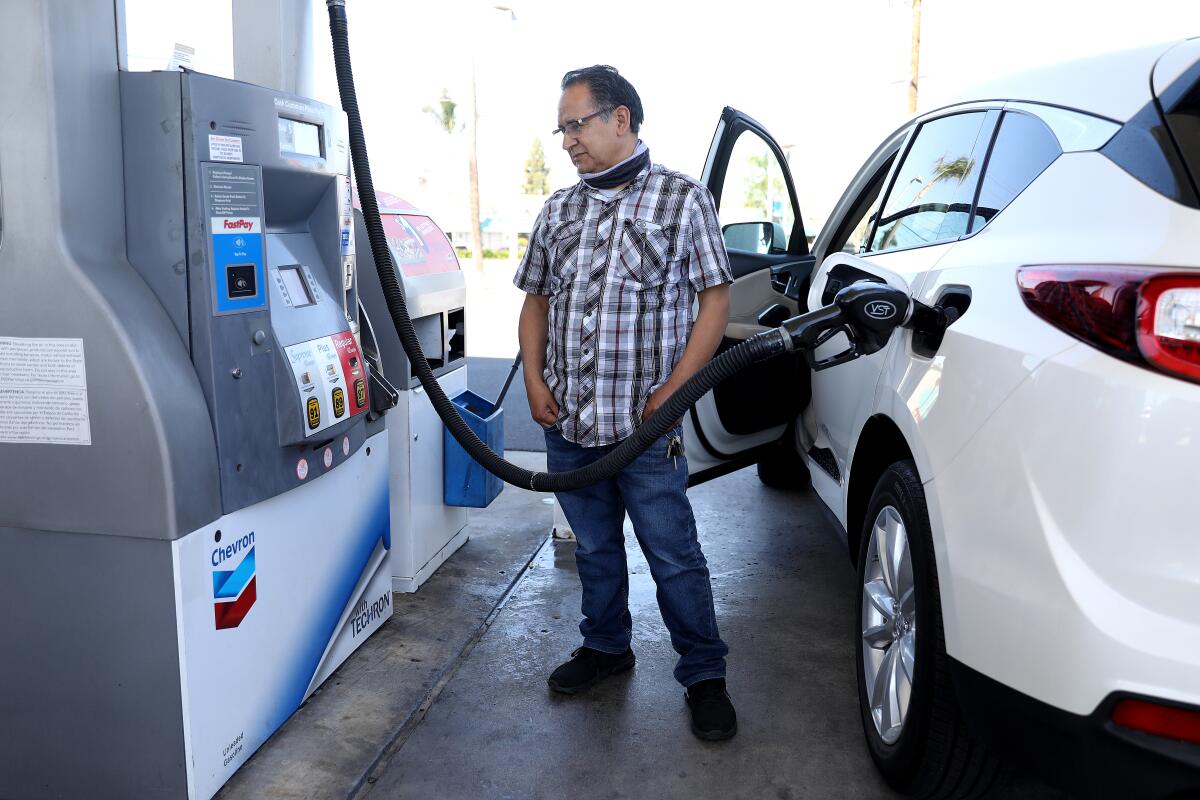
People often ask me whether they should buy an electric car. I ask why they want one. The most common response is a variation on “I want to do my part to save the planet.” (And save money on gasoline too.)
Not everyone appreciates my take on the subject: If you want to contribute to the reduction of greenhouse gases, and you already own a car, you should really keep that car until it can’t be driven anymore. Yes, that noisy, foul-smelling, gasoline-guzzling greenhouse-gas-spewing machine.
Heavens, why? The logic is simple. If you do sell that car to buy an electric vehicle, the new owner will keep burning the gasoline you used to burn, and keep emitting the same carbon dioxide and toxic pollution you once inflicted on Mother Earth.
Meanwhile, you’ll be responsible for all the emissions that come with your brand new electric car — the emissions associated with the vehicle’s manufacturing process, the manufacturing process of the batteries, the emissions that come with the mining and transporting of minerals that allow the batteries to function.
And then there’s the emissions that emanate from the generation of electricity used to charge up your car — unless you are connected to a 100% renewable electric grid. Even then, the making of solar cells and panels and giant windmills emits carbon dioxide too.
There are myriad studies on the greenhouse gas costs of making and using a new electric car. The costs are far less: more than 40 tons of what’s called carbon dioxide equivalent over the life an an average size internal combustion car, compared with about 20 tons for an electric car, according to the International Energy Agency.
Even if the electricity is clean, you’re stuck with the carbon costs of manufacturing — about 5 tons, about the same as for gasoline and diesel cars, the IEA reports.
Bottom line, by keeping your old car, you save the atmosphere from at least 5 tons of carbon.
You could have your gasoline combustion car destroyed — even better for the planet. Then you could buy your new EV with a fairly clean conscience.
Of course, you could try to do without a personal motor vehicle at all and walk, use a bicycle, take public transportation. That’s the best choice.
But most people need a car. If you’re driving a 20-year-old Toyota while someone else is buying a brand new Tesla, congratulations. By comparison, the environmental steward is you.
We’ll be back in your inbox next week. If you enjoyed this newsletter, or previous ones, please consider forwarding it to your friends and colleagues. For more climate and environment news, follow @Sammy_Roth and for more on the climate effects of motor transportation, @russ1mitchell on Twitter.
Toward a more sustainable California
Get Boiling Point, our newsletter exploring climate change, energy and the environment, and become part of the conversation — and the solution.
You may occasionally receive promotional content from the Los Angeles Times.




